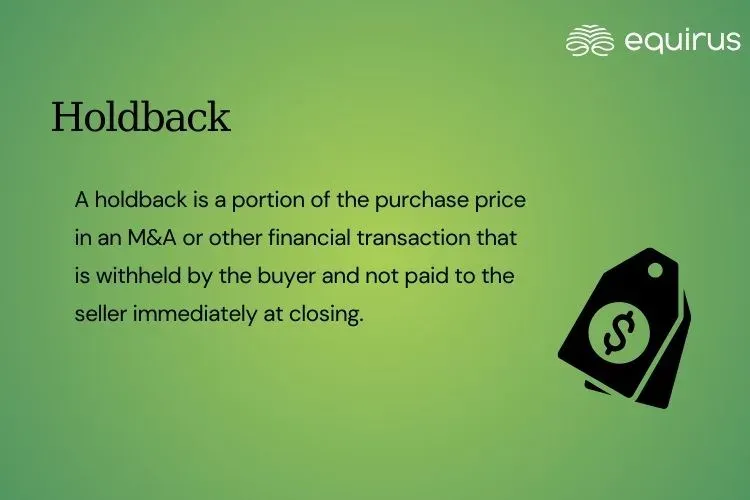Holdback

Key Highlights
-
A holdback is a portion of the purchase price in an M&A or other financial transaction that is withheld by the buyer and not paid to the seller immediately at closing.
-
Holdbacks help mitigate risk for the buyer by ensuring that the seller remains liable for any issues that arise after the deal is completed.
What is Holdback?
A holdback is a portion of the purchase price in an M&A (mergers and acquisitions) or other financial transaction that is withheld by the buyer and not paid to the seller immediately at closing. It is kept aside to cover:
- Potential post-closing adjustments
- Indemnity claims
- Unforeseen liabilities or breaches of representations and warranties
Why Holdbacks are Used?
Holdbacks help mitigate risk for the buyer by ensuring that the seller remains liable for any issues that arise after the deal is completed.
It acts as:
- A security mechanism
- A form of guarantee or protection
- A tool for ensuring seller accountability
How it Works? – Example
Imagine a company is sold for ₹100 crore. The buyer agrees to pay ₹90 crore at closing and retain ₹10 crore as a holdback for 12 months.
If no issues arise in the next 12 months, the seller receives the remaining ₹10 crore.
If there's a ₹2 crore liability discovered post-sale, the buyer recovers it from the holdback and pays only ₹8 crore to the seller.
Key Features of a Holdback
1. Purpose: Protect the buyer from undisclosed liabilities, breaches of warranties, or working capital adjustments.
2. Amount: Often a small percentage of the total deal value (e.g., 5%–15%).
3. Duration: Typically 6–24 months post-closing, depending on the agreement.
4. Release Conditions: If no claims are made within the holdback period, the funds are released to the seller.
Holdback vs Escrow
| Aspect | Holdback | Escrow |
|---|---|---|
| Funds held by | Buyer | Neutral third party (escrow agent/bank) |
| Control | Buyer-controlled | Third-party controlled |
| Objective | Post-deal adjustments and protection | Similar, but with more neutrality |
Sometimes, holdback amounts are placed in an escrow account, making the two terms overlap in practice.
